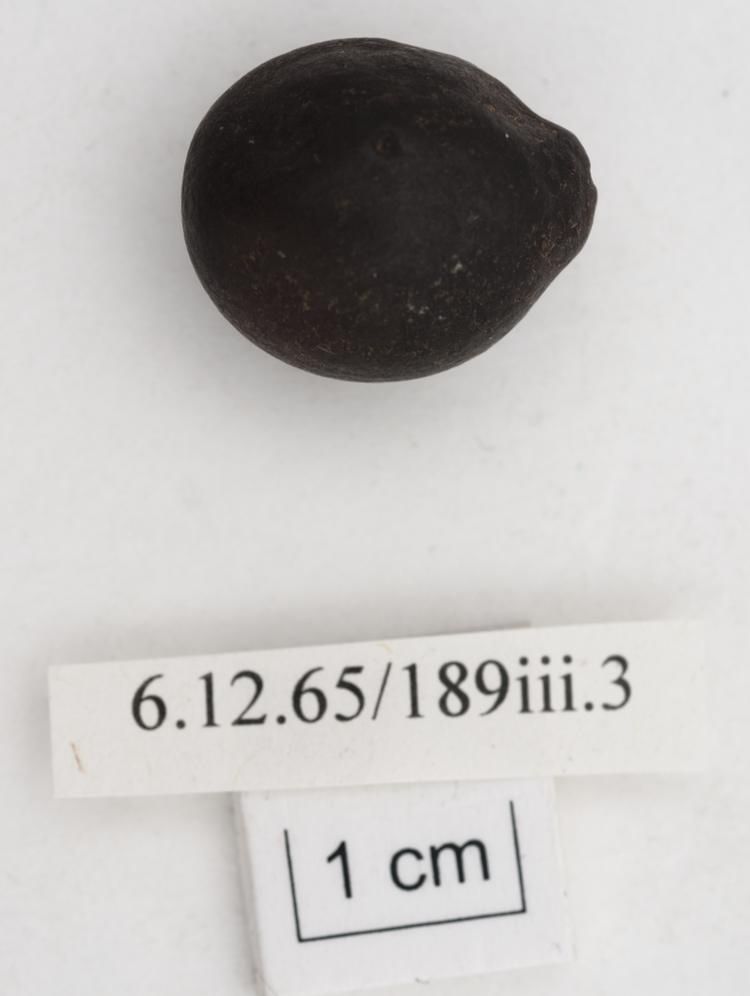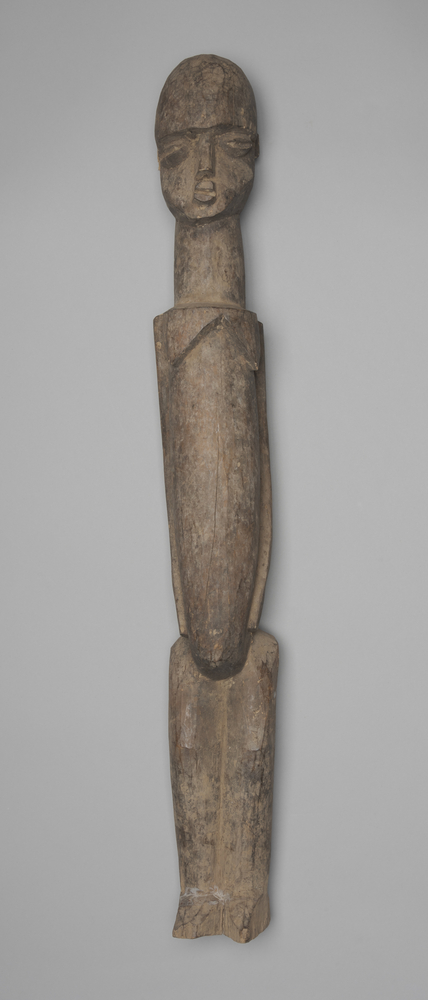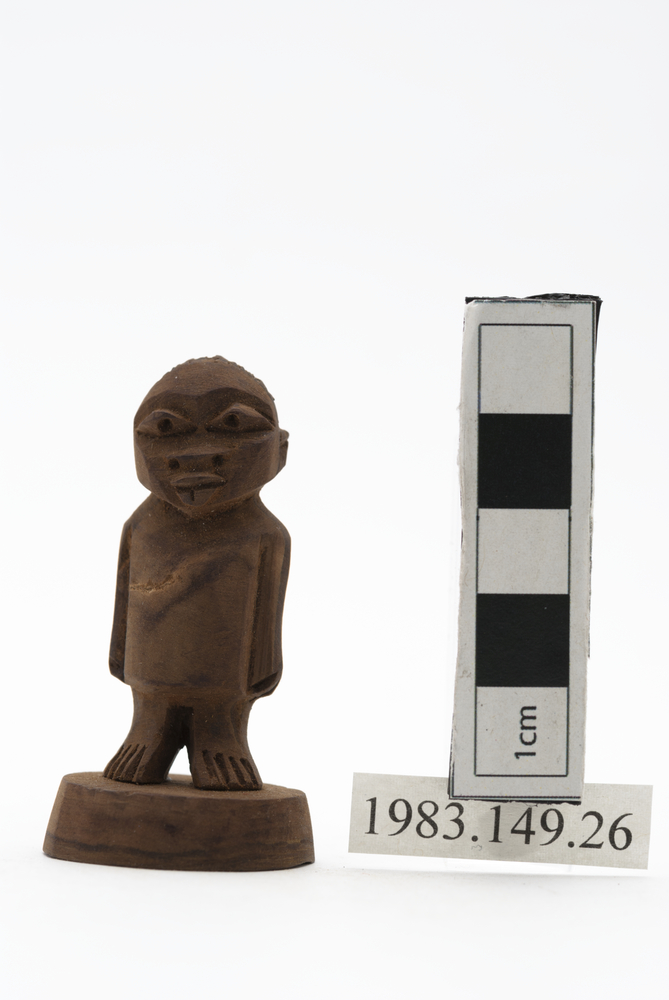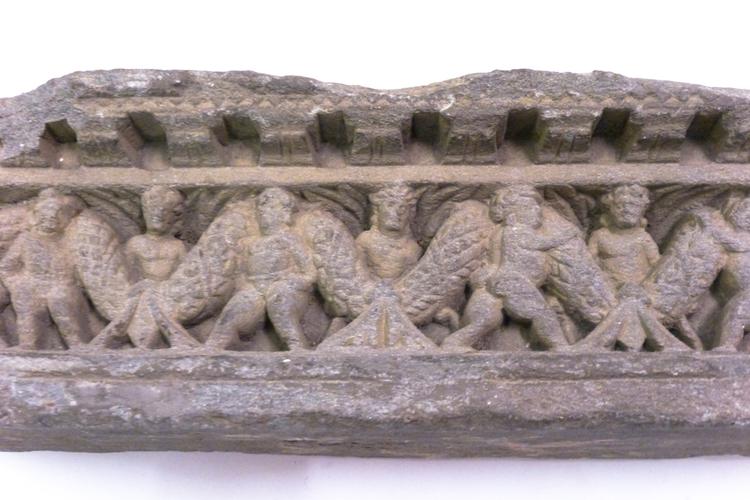
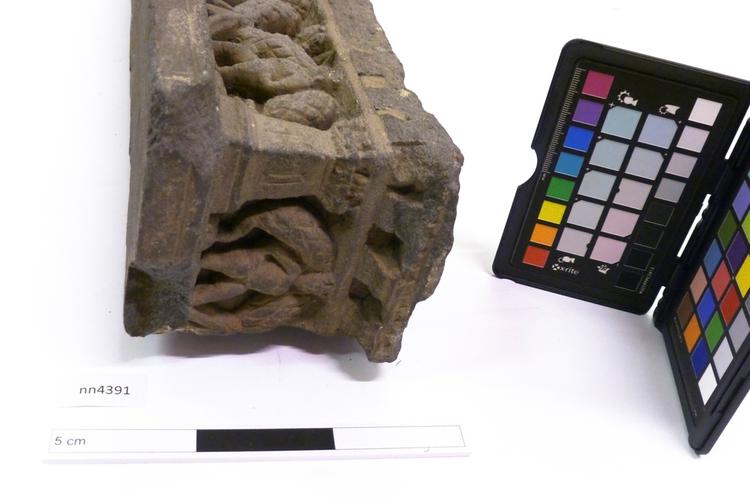
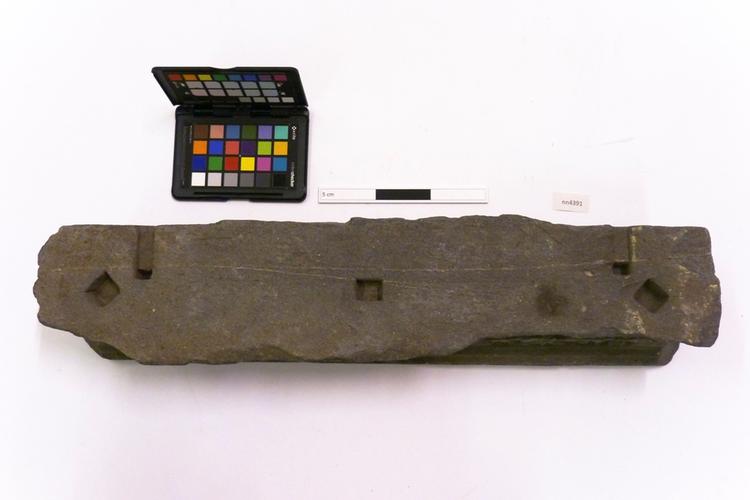
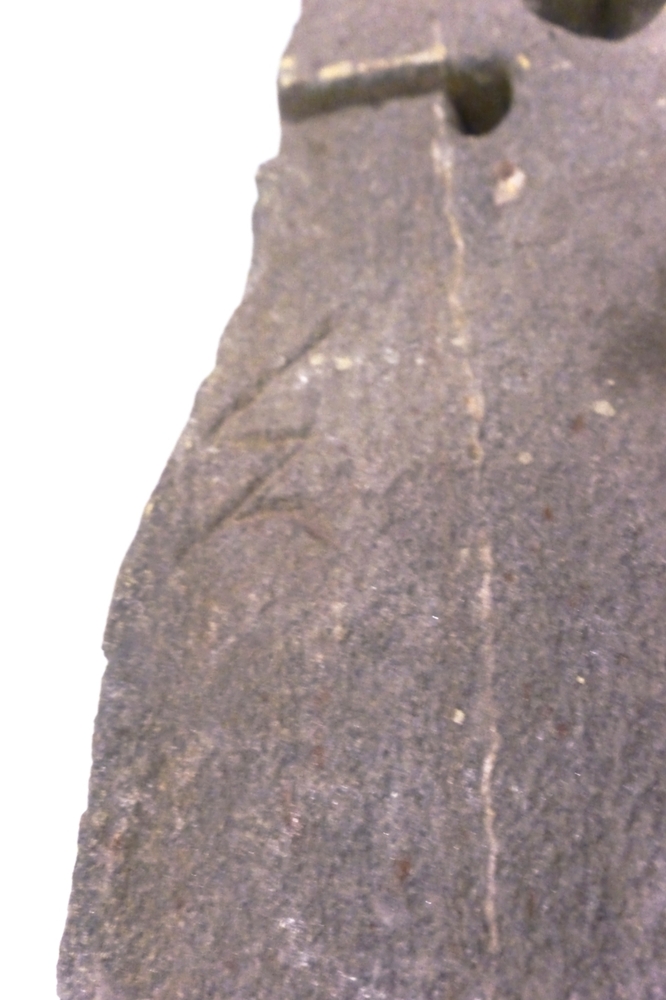
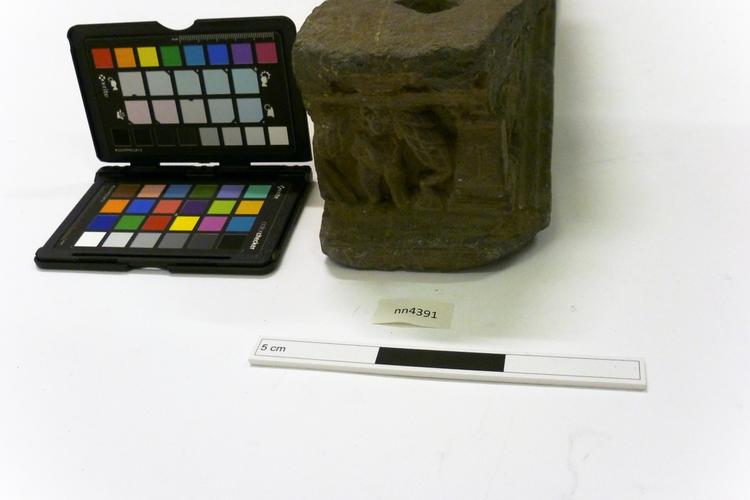
Section of a long decorative sculpted frieze depicting a series of naked putti or amorini carrying a heavy flowery or leafy garland and either standing or walking to the left or to the right. Behind the garland where it dangles to the ground stand bare-chested male figures with turbans. At this point on the undulating garland what seem to be trios of acanthus leaves dangle to the ground. Behind the standing men are grooves probably representing a canopy of vegetation. Above this parade is a decorative border of multiple corbels surmounted by a horizontal saw-tooth pattern. This frieze section is a corner piece, with these motifs continuing around to the right of the frieze to depict one more amorino under the heavy garland. The reverse of the piece shows clearly a series of shallow square indentations and rectangular clamp channels intended for securing the sculpture in place with metal fixtures. On the unsculpted reverse of the piece is a letter or symbol looking like the latin letter ‘W’, cut into the stone. Made from grey micaceous schist, the typical medium of almost all Gandharan sculpture of this period.
A section of a long decorative sculpted frieze depicting a series of naked putti or amorini (amores or cupid figures) carrying a huge fat flowery or leafy garland and either standing, or walking to the left or to the right. Behind the garland at the places where it dangles to the ground stand bare-chested male figures with turbans (yakṣīs or male nature spirits?). At this point on the undulating garland dangle to the ground what seem to be trios of acanthus leaves (see Zwalf 1996) and behind the standing men are grooves probably representing a canopy of vegetation. Above this parade is a decorative border of multiple corbels surmounted by a horizontal saw-tooth pattern. This frieze section is a corner piece, with these motifs continuing around to the right of the frieze to depict one more amorino under the heavy garland. The reverse of the piece shows clearly a series of shallow square indentations and rectangular clamp channels intended for securing the sculpture in place with metal fixtures (commonly iron). On the unsculpted reverse of the piece is a letter or symbol looking like the latin letter ‘W’, cut into the stone. Made from grey micaceous schist, the typical medium of almost all Gandharan sculpture of this period. 2nd or 3rd centuries in date. These garland and amorini motifs are well known from Roman sarcophagi of the early centuries CE or even earlier (as they are at thoroughly Indianized Amaravati in South India at a roughly similar period (see Knox, 1992)). This foreign source is likely to be the origin of this very common Gandharan motif. The precise mechanism by which it was introduced to the Subcontinent is unclear, however, apart from what must have been massive cultural influences from the West at the time, based as much as anything on mutual trade and commerce of all kinds, via such pathways as the famous Silk Road in its many manifestations. There is no findspot or archaeological context known for this piece, and no apparent way of tracing this information beyond the fact that it is inscribed in black crayon with the number '11’. Other pieces in this collection are similarly inscribed in black with other numbers, forming a kind of sequence and so an indication of a relationship with each other (both in provenance and acquisition terms).



